As part of being #wilder we are
- creating wild corridors (the aim is to have a wild corridor which will go from the A30 to the wild area at the school)
- we have areas at St John's which we have as mown grass such as at the front of church or the social area where we sit for coffee, but we also want to have some areas which will be a mid length and additionally we will have a couple of areas along a hedges at the end of the graveyard which will perhaps be cleared once or twice a year. The reason for not mowing, is to allow the flowering plants and grasses to flower and then seed. The flowers provide food for insects. We will monitor and see what difference it makes, and review for next year.
- we have a created a number of hibernacula or dead hedges - provide hiding places and nesting habitats for all sorts of creatures, as well as food for insects. As it rots down, the nutrients are recycled back into the earth below
- we have dead wood (either the bottom of a cut tree, or big chucks of wood). Dead wood is packed with nutrients and it’s a great home, too. There are a whole host of species that live in it, eat it and eat the things that live in it. Plus, it’s good for the environment
- we are aiming to catalog and add native wild flowers to the wild areas
- we have run monthly bioblitz (basically surveying over a short period of time) to see what we can find - looking at plants, but also joining in butterfly or insect hunts, details are on our trello board, and encouraging to see avariety of wild flowers and polinators on our grounds
- we are having a variety of lengths of grass - the different lengths are aiming to be different types of meadow habitats
Native Flowers
By having an area dedicated to wild flowers, we are hoping to increase the diversity on our grounds. A native plant is one that has adapted to live with the other plants and animals that make up the community of life it is found in. For example many butterflies lay eggs on specific plants, the catapillers have adapted to prefer those plants and then without those plants we lose the butterflies. By increasing the variety of native flowers, we are hoping to increase the diversity of wildlife in our church grounds.
Native flowers you may see at St John's include:
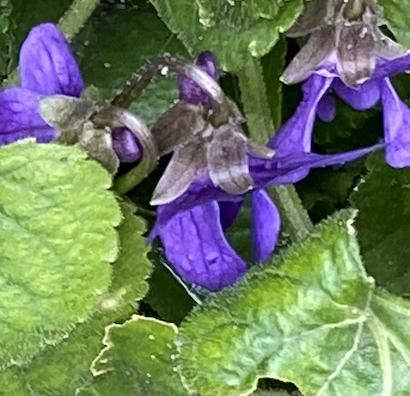 This is a violet, there are a number of places you will see wild violets in our grounds. Is this a sweet violet, Viola odorata? or a common dog violet, Viola riviniana? Perhaps the easiest way to tell them apart is by the scent, as one is scented and one isn't. Violets are widespread locally, but becomming increasingly uncommon in the UK. Another way to tell the apart is to look at the sepal - if they're pointed they are dog violets, and if they are rounded they are sweet violets. Can you tell what kind of violets are in our garden at St John's?
This is a violet, there are a number of places you will see wild violets in our grounds. Is this a sweet violet, Viola odorata? or a common dog violet, Viola riviniana? Perhaps the easiest way to tell them apart is by the scent, as one is scented and one isn't. Violets are widespread locally, but becomming increasingly uncommon in the UK. Another way to tell the apart is to look at the sepal - if they're pointed they are dog violets, and if they are rounded they are sweet violets. Can you tell what kind of violets are in our garden at St John's?
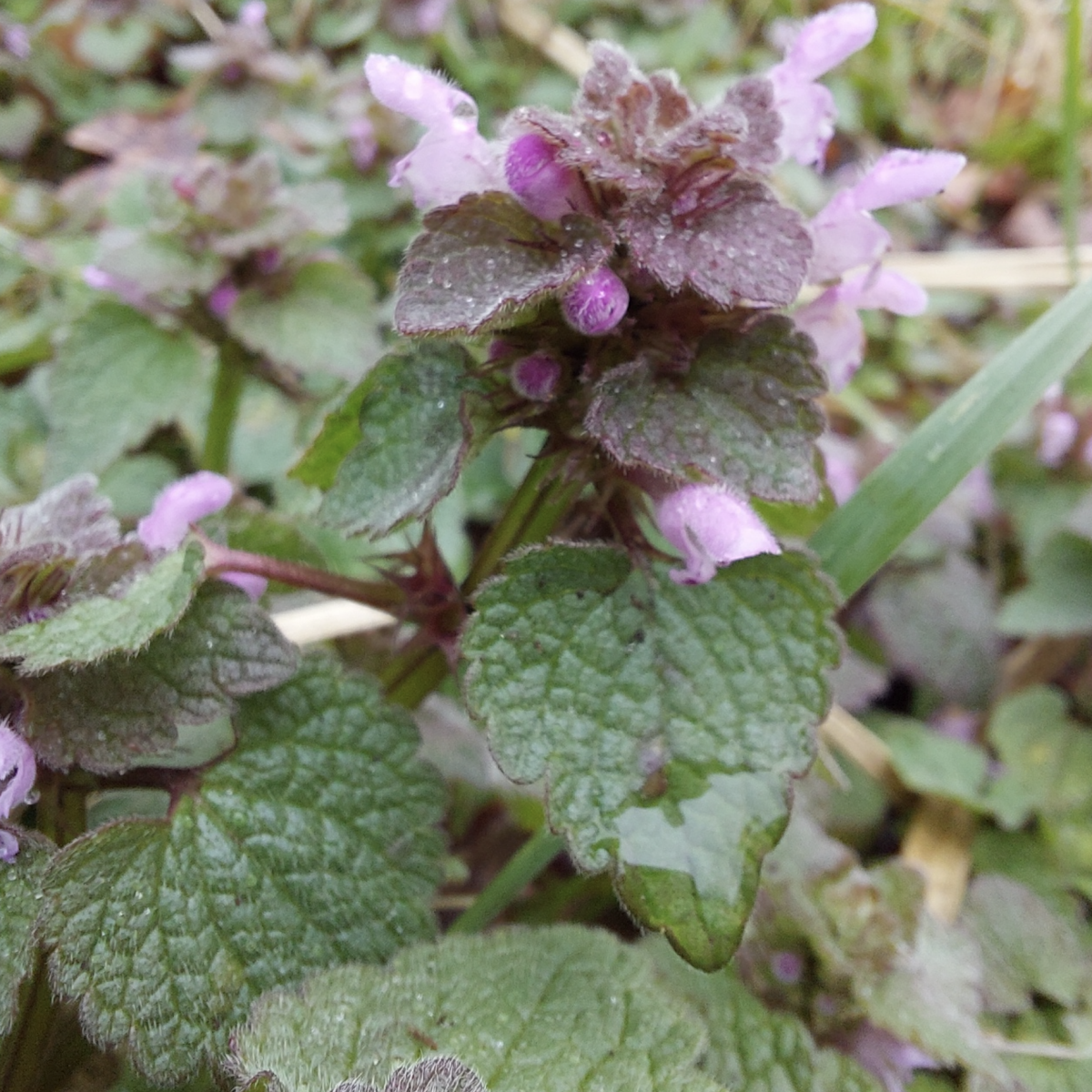 White and Red Dead Nettles (not in the nettle family at all, so do not sting). Lamium album or Lamium purpureum. Lots of different species of long-tongued insects visit the flowers of red dead-nettle, including the red mason bee and bumblebees. The caterpillars of garden tiger, white ermine and angle shades moths feed on the leaves. Lots of different species of long-tongued insects visit the flowers of white dead-nettle, including the red mason bee, white-tailed bumblebee and burnished brass moth. The caterpillars of the garden tiger and angle shades moths feed on the leaves, as do Green tortoise beetles. Have you noticed, they both have square stems?
White and Red Dead Nettles (not in the nettle family at all, so do not sting). Lamium album or Lamium purpureum. Lots of different species of long-tongued insects visit the flowers of red dead-nettle, including the red mason bee and bumblebees. The caterpillars of garden tiger, white ermine and angle shades moths feed on the leaves. Lots of different species of long-tongued insects visit the flowers of white dead-nettle, including the red mason bee, white-tailed bumblebee and burnished brass moth. The caterpillars of the garden tiger and angle shades moths feed on the leaves, as do Green tortoise beetles. Have you noticed, they both have square stems?
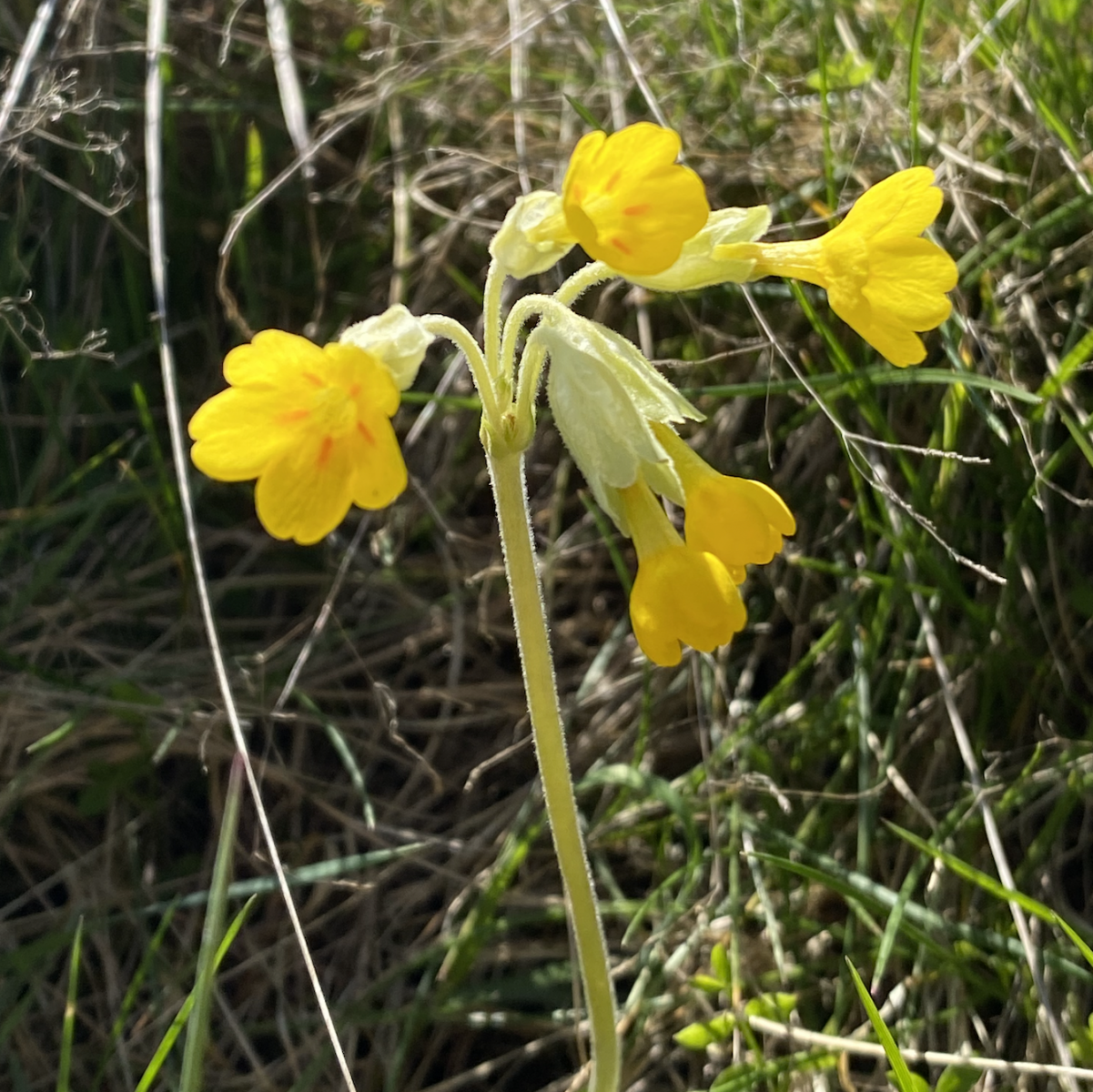 Cowslip, Primula veris (in the primrose family). Another spring flower, found in traditional hay meadows, ancient woodlands and hedgerows, and now in decline. There are lots of folk common names for cowslips including 'Keys of Heaven' (according to legend, St Peter dropped the keys to Heaven and where they landed Cowslips grew) so perhaps apt to find in the graveyard. The graveyard area of the garden at St John's has quite a few cowslips, and our mowers are careful to avoid mowing them!
Cowslip, Primula veris (in the primrose family). Another spring flower, found in traditional hay meadows, ancient woodlands and hedgerows, and now in decline. There are lots of folk common names for cowslips including 'Keys of Heaven' (according to legend, St Peter dropped the keys to Heaven and where they landed Cowslips grew) so perhaps apt to find in the graveyard. The graveyard area of the garden at St John's has quite a few cowslips, and our mowers are careful to avoid mowing them!
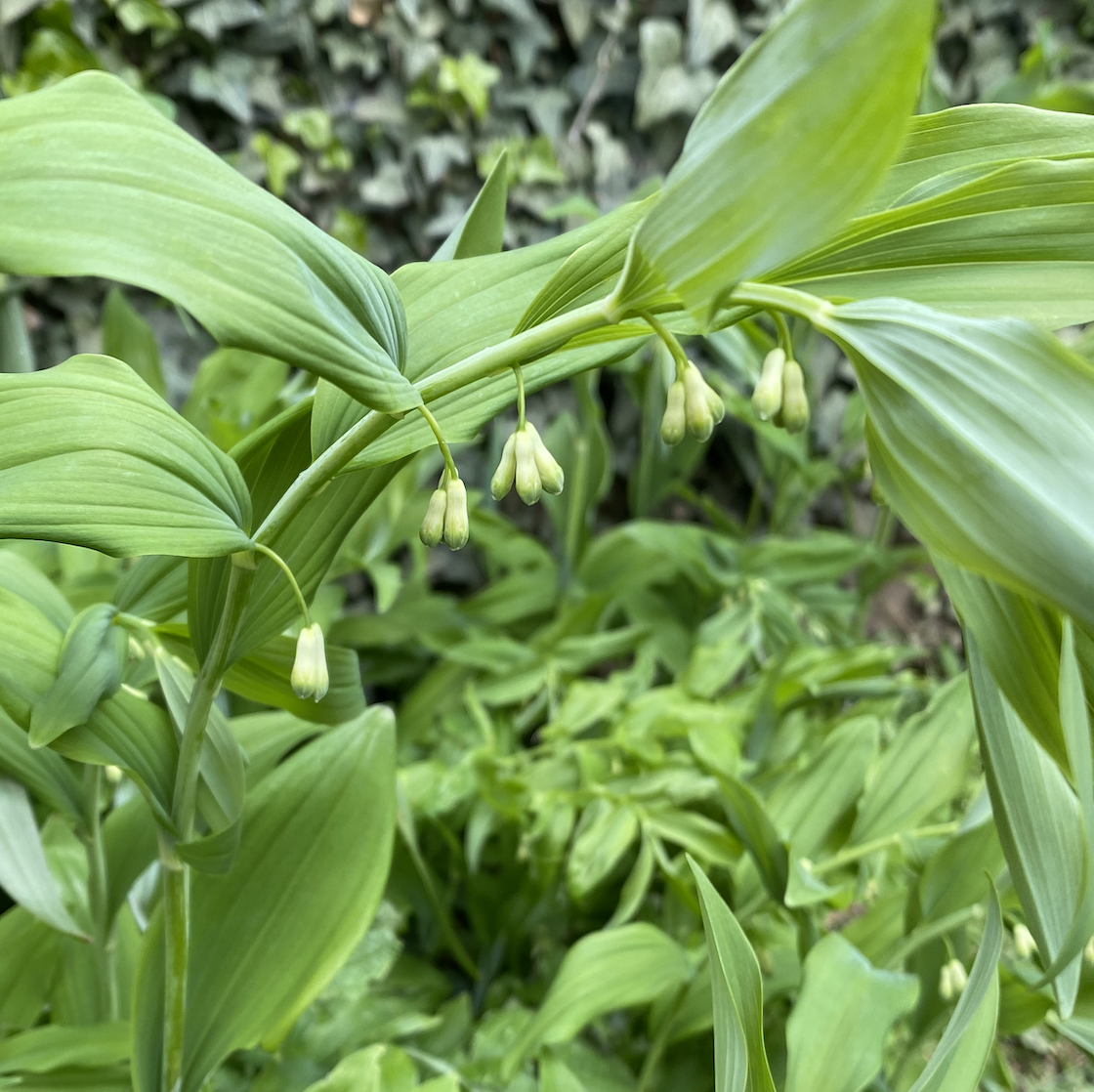 Solomon's Seal, Polygonatum x hybridum. Although the derivation of the name is unknown, one theory is that it is inspired by the mark where the stem emerges from the rhizome, which looks like two interlocked triangles, which is the symbol of the biblical figure Solomon. Other names are David's Harp and Ladder to Heaven.
Solomon's Seal, Polygonatum x hybridum. Although the derivation of the name is unknown, one theory is that it is inspired by the mark where the stem emerges from the rhizome, which looks like two interlocked triangles, which is the symbol of the biblical figure Solomon. Other names are David's Harp and Ladder to Heaven.
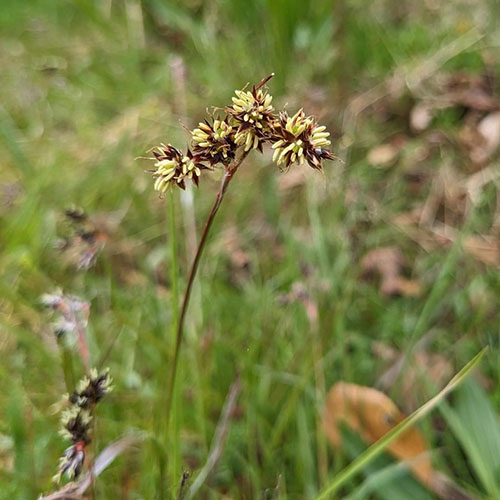 Field woodrush, Luzula campestris, although commonly known as Good Friday Grass as that is when it flowers. Whilst its not a good plant to have in a lawn, it will be found in grasslands & meadows and as a plant which flowers early in the year is a good source of food for insects in early spring.
Field woodrush, Luzula campestris, although commonly known as Good Friday Grass as that is when it flowers. Whilst its not a good plant to have in a lawn, it will be found in grasslands & meadows and as a plant which flowers early in the year is a good source of food for insects in early spring.
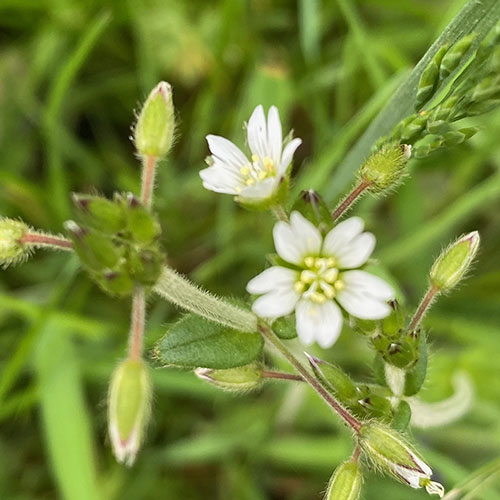 Common mouse-ear, Cerastium fontanum. A low-growing, spreading plant, Common mouse-ear has tiny, white, five-petalled star like flowers; its dark green leaves are covered with white hairs. Did you know its seed last for upto 40 years in the ground? It is another plant which provides good food for insects.
Common mouse-ear, Cerastium fontanum. A low-growing, spreading plant, Common mouse-ear has tiny, white, five-petalled star like flowers; its dark green leaves are covered with white hairs. Did you know its seed last for upto 40 years in the ground? It is another plant which provides good food for insects.
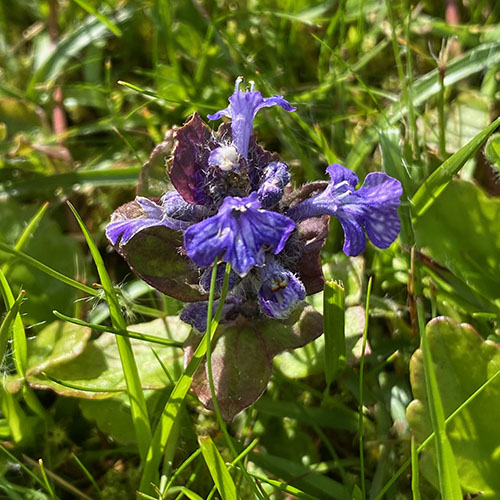 Selfheal, Prunella vulgaris, can be seen creeping through the short turf of a grassland or the uncut grass. Its clusters of violet flowers appear from June to October and provide a nectar source for bees and wasps. As its name suggests it has a long tradition of being used in herbal medicine for everything from stopping bleeding and healing wounds, to treating heart disease and sore throats.
Selfheal, Prunella vulgaris, can be seen creeping through the short turf of a grassland or the uncut grass. Its clusters of violet flowers appear from June to October and provide a nectar source for bees and wasps. As its name suggests it has a long tradition of being used in herbal medicine for everything from stopping bleeding and healing wounds, to treating heart disease and sore throats.
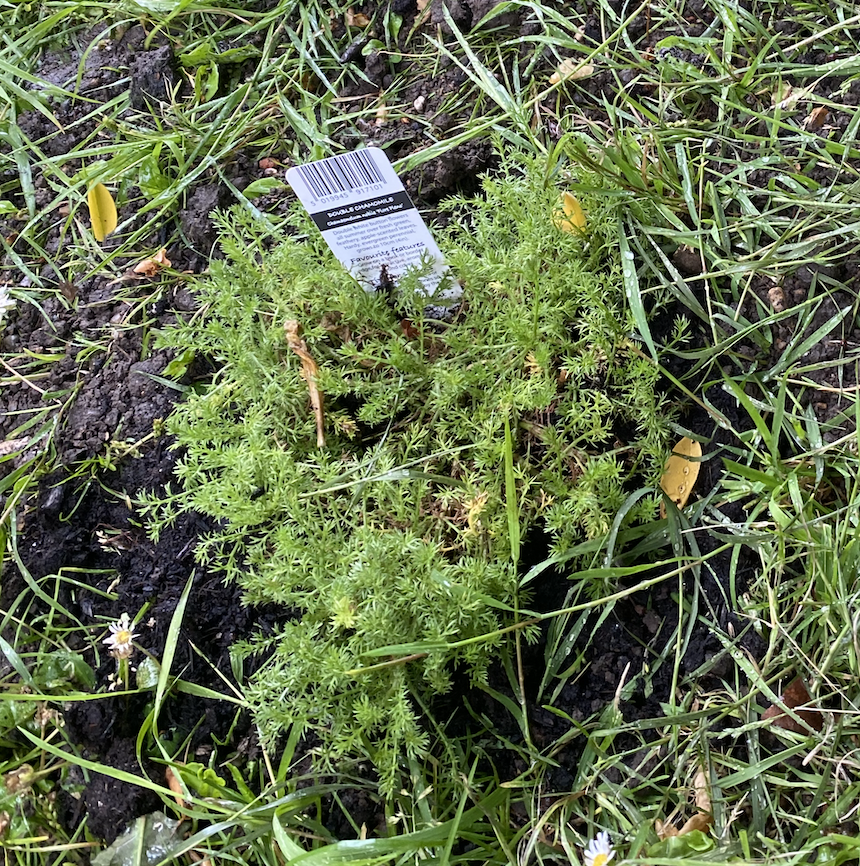 We are trying to grow a small chamomile lawn outside the corner by the Lady Chapel, where there is a small corner of grass by the path. Chamomile, Chamaemelum nobile, is a herb and good for areas where grass does not flourish (as needs less maintenance). Chamomile can grow to perhaps 10-15cm and is mainly used for medicinal uses (perhaps you drink chamomile tea as a caffine free drink before bed? it is meant to be calming and aid digestion).
We are trying to grow a small chamomile lawn outside the corner by the Lady Chapel, where there is a small corner of grass by the path. Chamomile, Chamaemelum nobile, is a herb and good for areas where grass does not flourish (as needs less maintenance). Chamomile can grow to perhaps 10-15cm and is mainly used for medicinal uses (perhaps you drink chamomile tea as a caffine free drink before bed? it is meant to be calming and aid digestion).
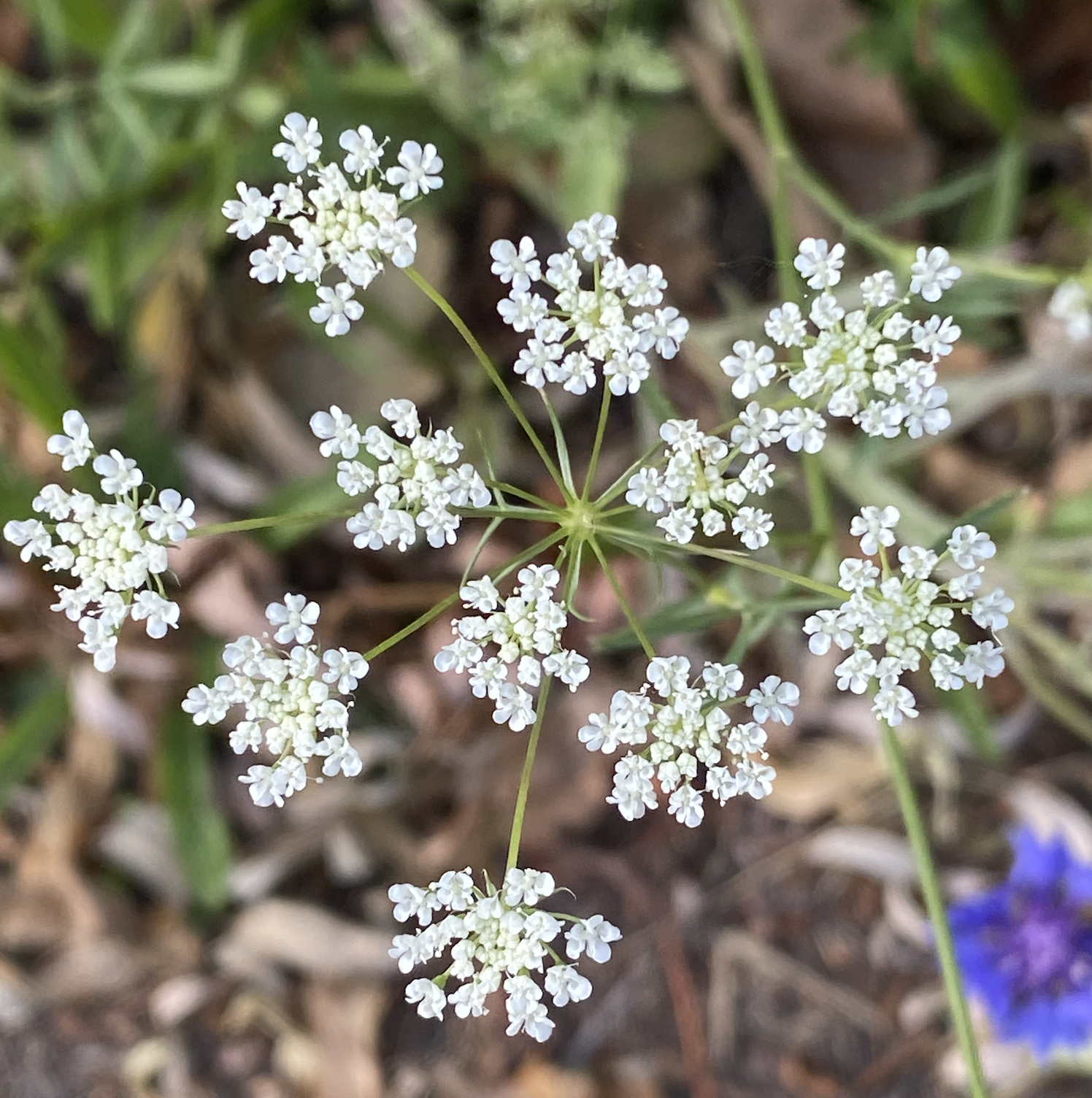 False Queen Anne's Lace, Ammi majus, also called Bishop's flower is a member of the carrot family. The flowers are said to symbolize santury and warmth.
False Queen Anne's Lace, Ammi majus, also called Bishop's flower is a member of the carrot family. The flowers are said to symbolize santury and warmth.
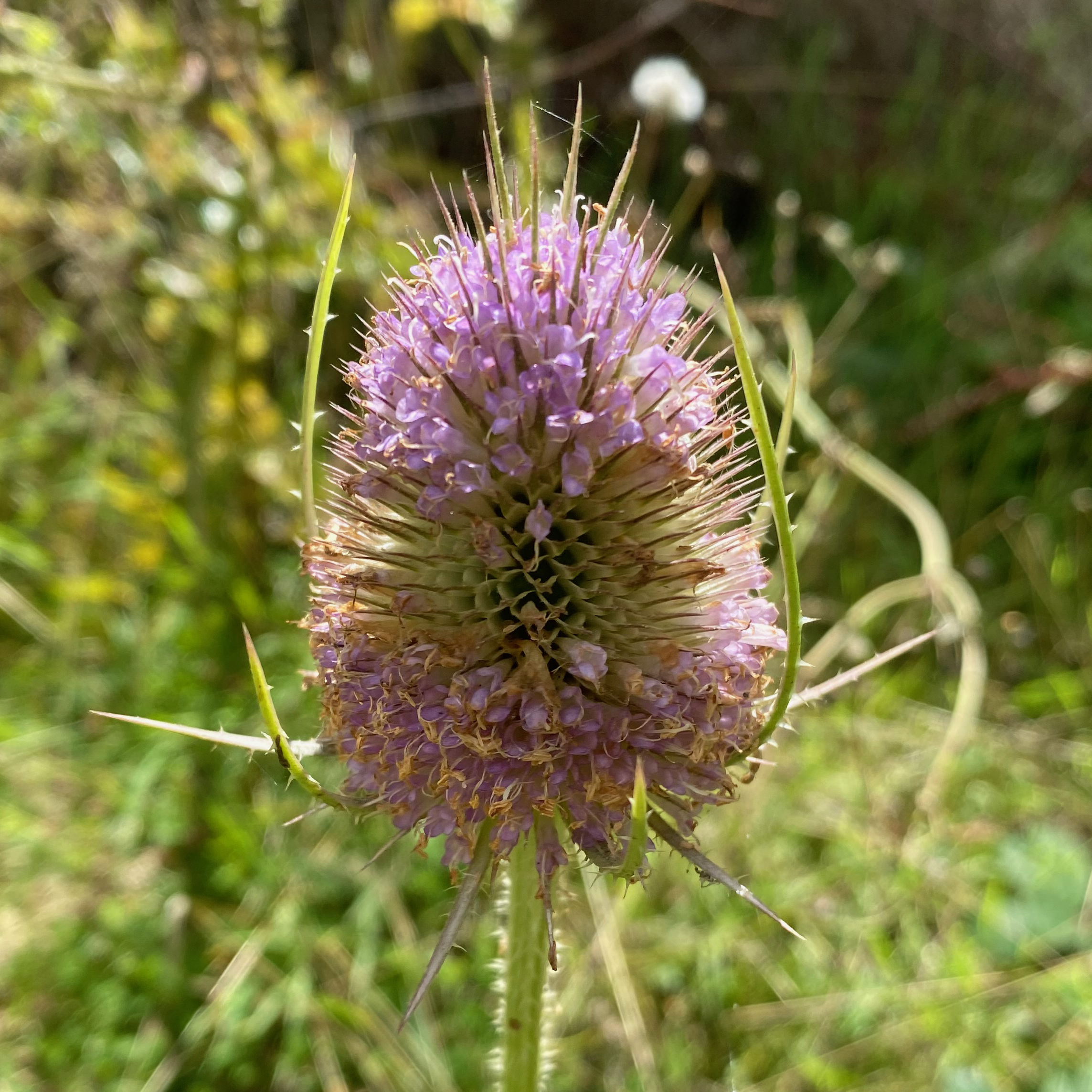 Teasel, Dipsacus fullonum, notice how the flowers start as a band in the middle, and spread out as two bands towards the top and bottom of the flower. Teasels are aften grown for flower arranging, although the birds also love the seeds!
Teasel, Dipsacus fullonum, notice how the flowers start as a band in the middle, and spread out as two bands towards the top and bottom of the flower. Teasels are aften grown for flower arranging, although the birds also love the seeds!
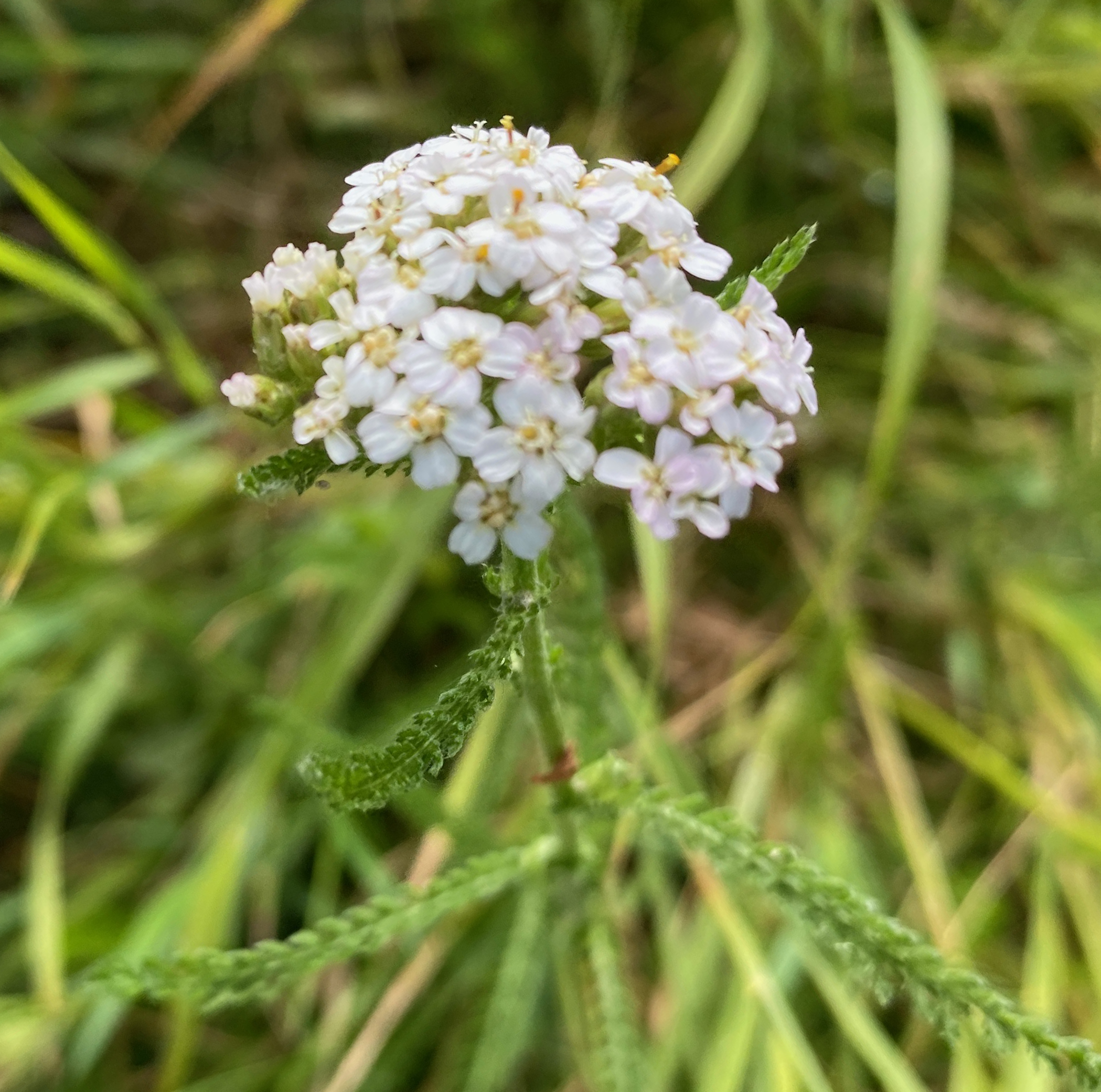 Yarrow, Achillea millefolium, this is in the same family of flowers as daisies. A lot of insects feed from the flowers, and many birds use yarrow to line their nests. Yarrow has a long history of being used in medicine, or for dying wool.
Yarrow, Achillea millefolium, this is in the same family of flowers as daisies. A lot of insects feed from the flowers, and many birds use yarrow to line their nests. Yarrow has a long history of being used in medicine, or for dying wool.
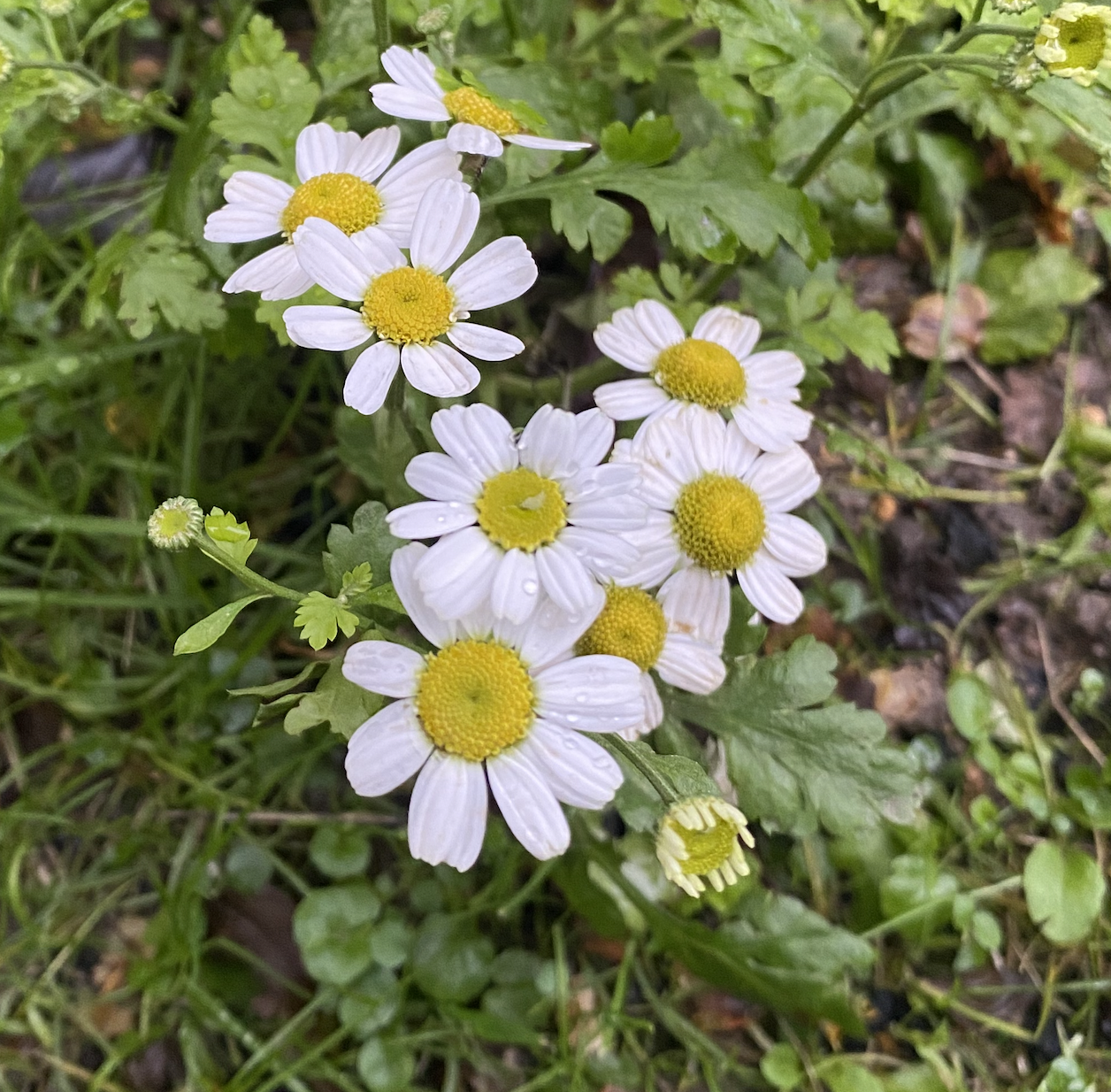 Feverfew, Tanacetum parthenium, this is in the same family of flowers as daisies. This is generally accepted as a native wild flower, it was brought into Britain by medieval herbalists, who used it for reducing fevers and headaches. It is now a common wildflower.
Feverfew, Tanacetum parthenium, this is in the same family of flowers as daisies. This is generally accepted as a native wild flower, it was brought into Britain by medieval herbalists, who used it for reducing fevers and headaches. It is now a common wildflower.
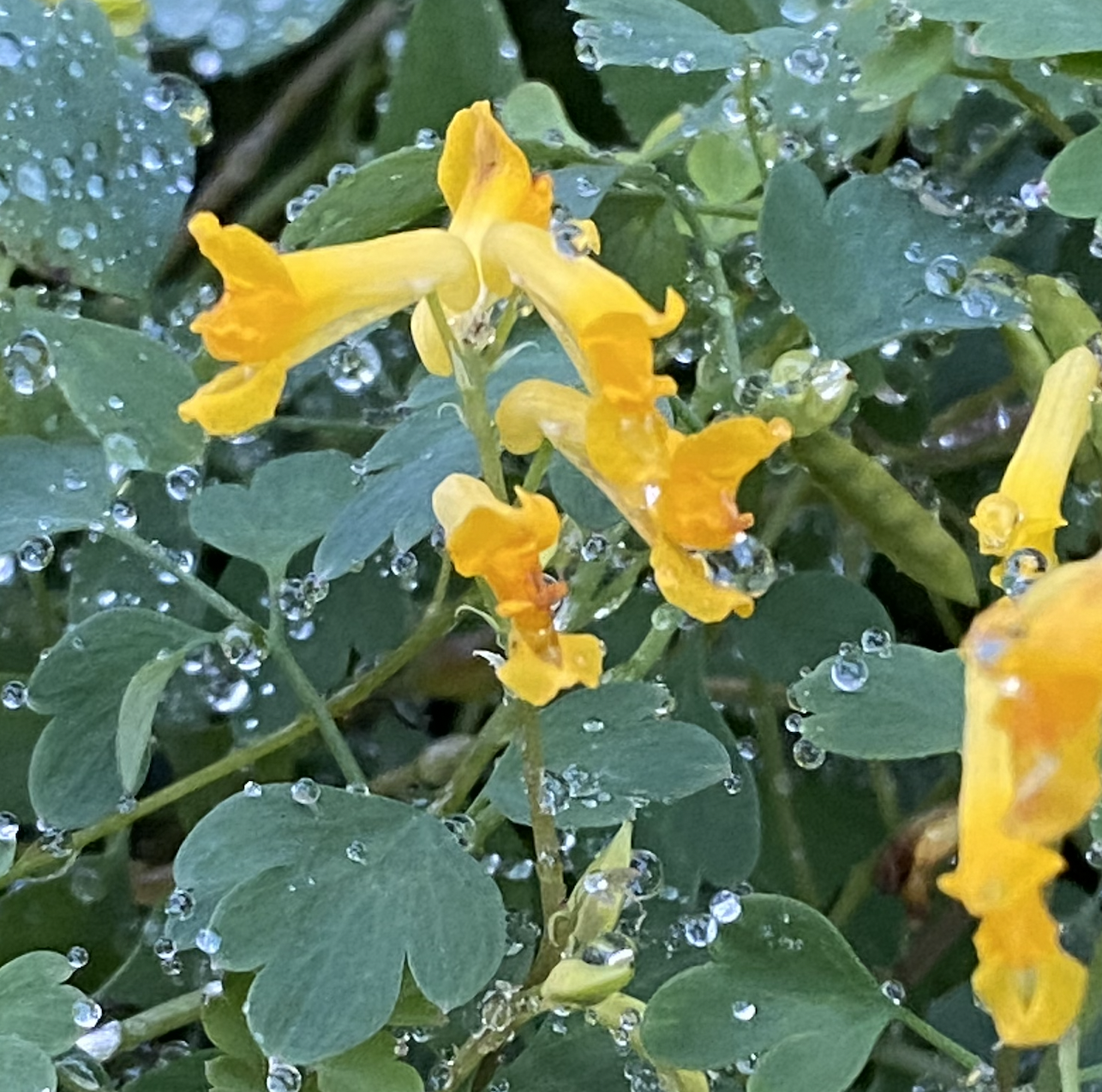 Yellow corydalis, Pseudofumaria lutea, this should not really be in this list of wild flowers, as its non-native and is really a garden escapee, it loves walls and pavements, and flowers from May until October or November.
Yellow corydalis, Pseudofumaria lutea, this should not really be in this list of wild flowers, as its non-native and is really a garden escapee, it loves walls and pavements, and flowers from May until October or November.
Warning: some wild flowers are protected species, so although temping to pick, please don't!
The picture below is of some of the things growing in one of our 'summer meadow areas' - how many of the flowers do you recognise?
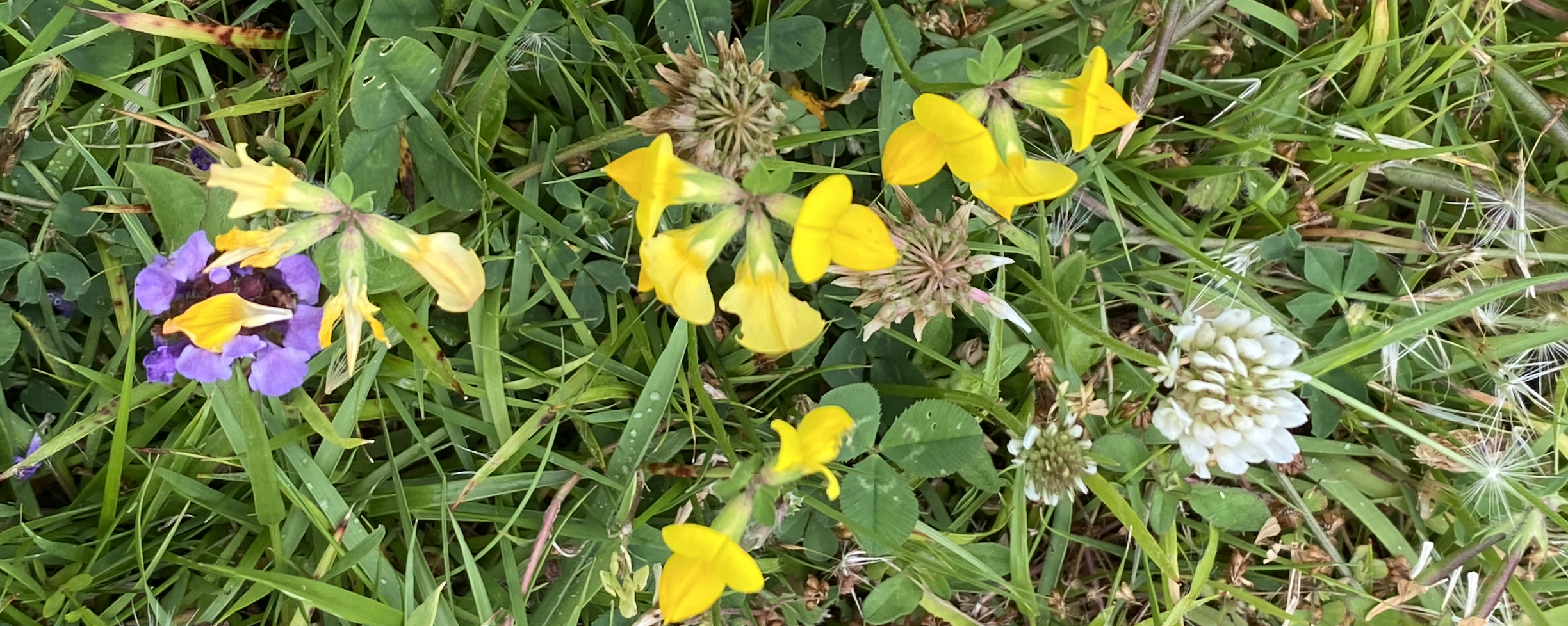
Minibeasts
We are starting to survey not just the flowers, but also other creatures we see, we have used a webcam and have been able to see mice, hedgehogs and even a fox visit.
We are surveying and are hoping to have slow worms in the churchyard. See our SliC (Slow-worms in Churchyards) page for details.
We also took part in the Great Butterfly Hunt in 2023.
Butterflies seen include:
- Large white (cabbage white)
- small white
- Common Blue
- Peacock (the colourful butterfly with 'eyes' shown below)
- Gatekeeper (the brown butterflies shown below)
- Red admiral
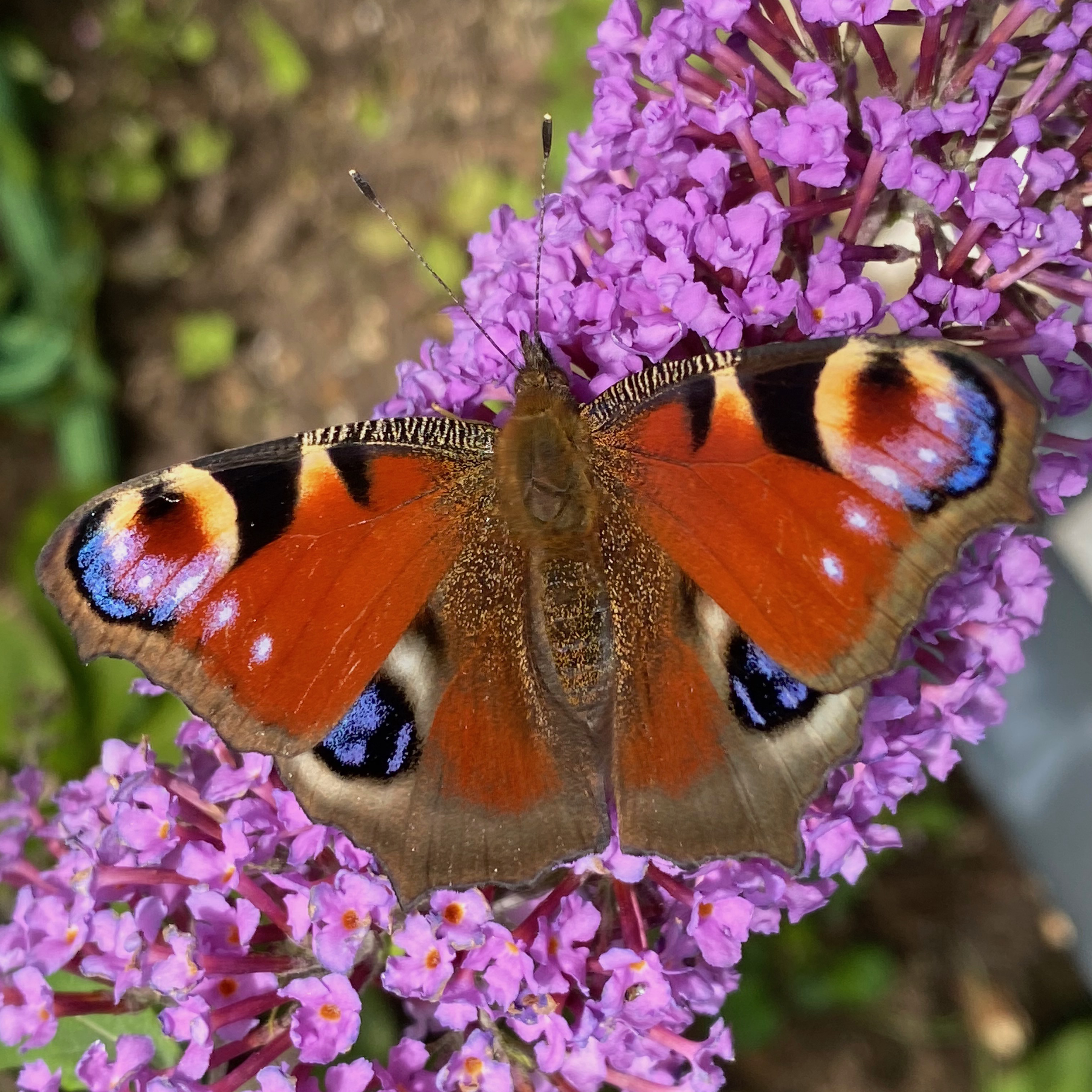
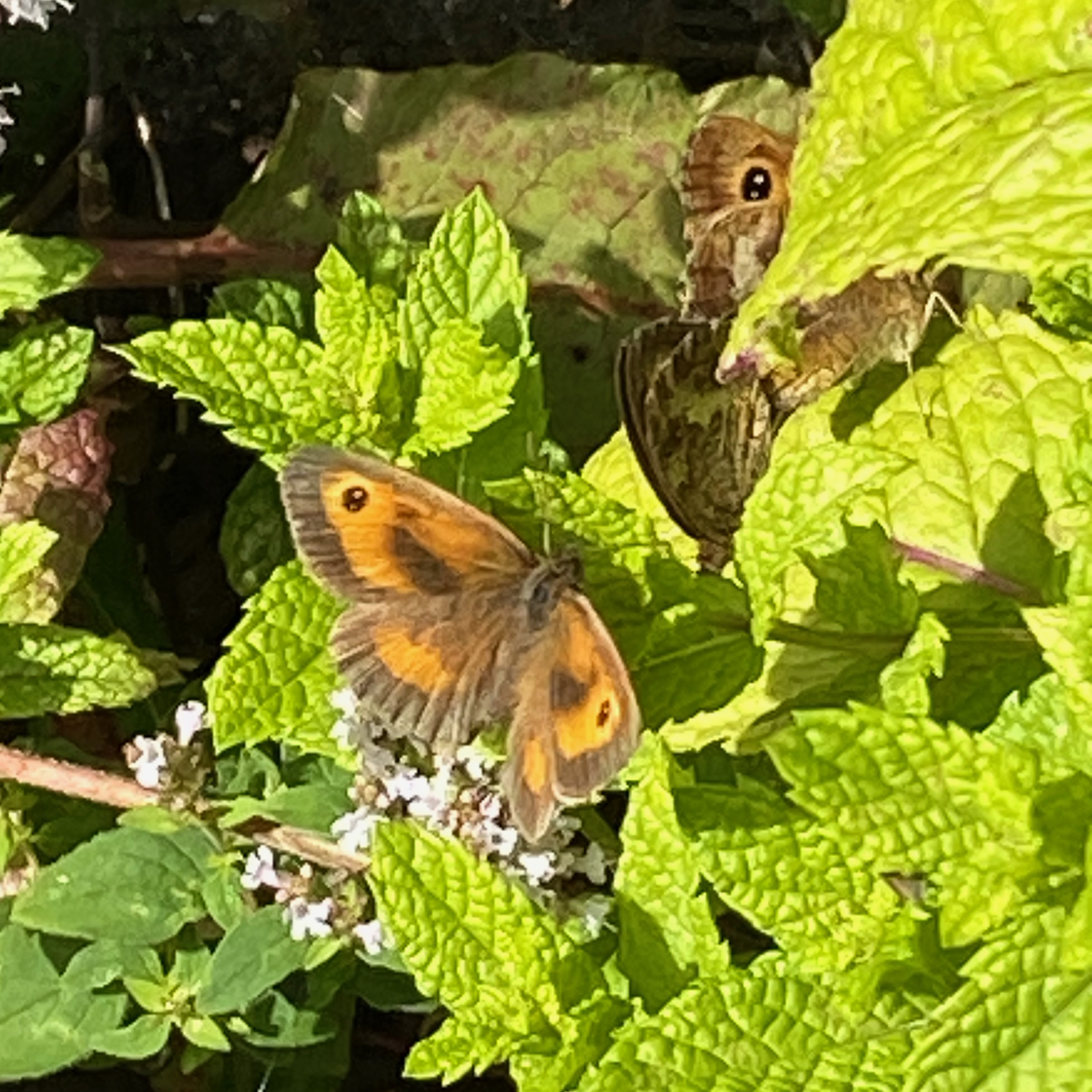
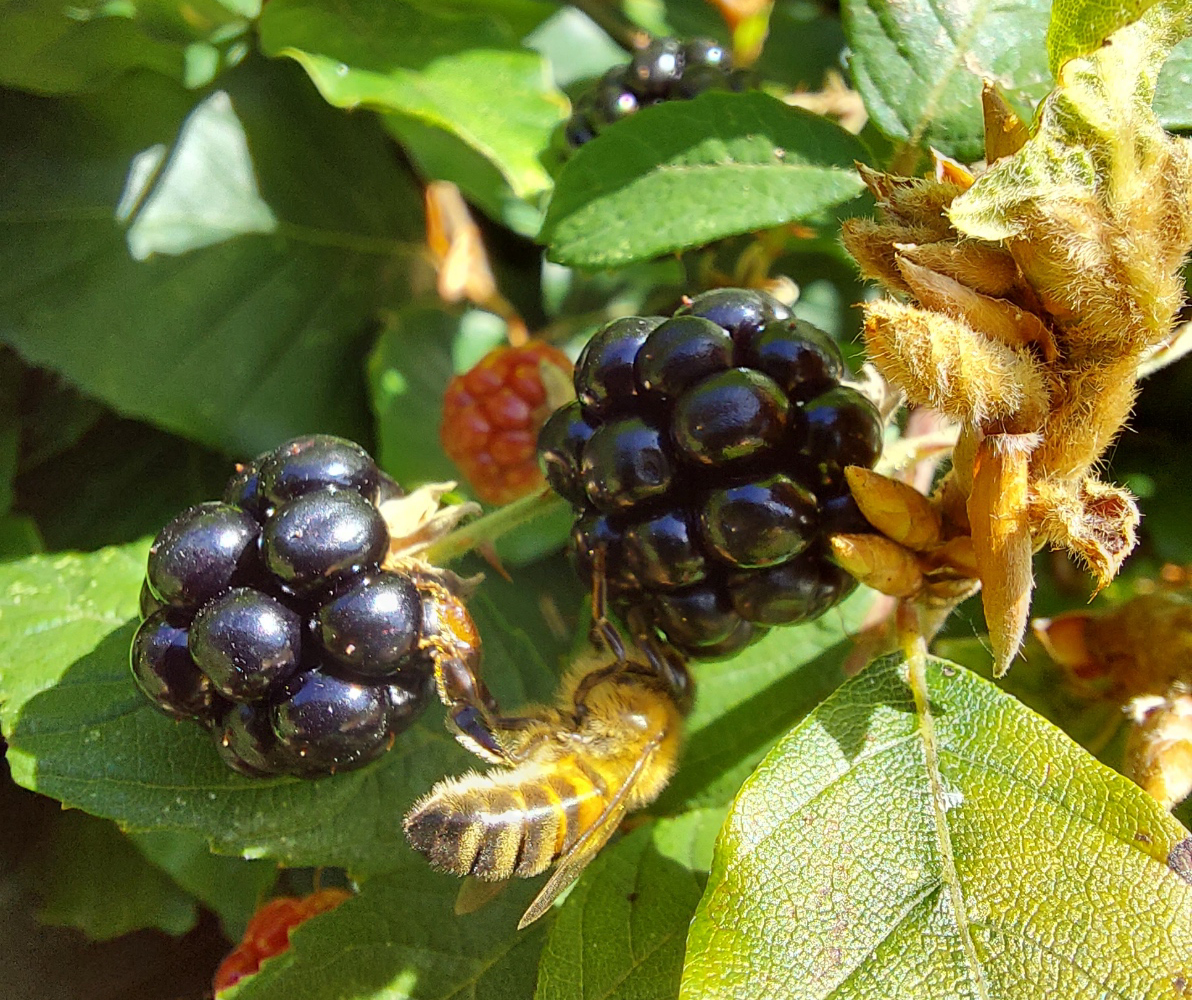 Blackberries provide food for so long during the year - early in the year the pollen is great for the polinators to feast upon, and later in the year the berries are used as food by both birds and insects. Did you know honey bees will eat blackberries? However, like many plants, we need to ensure they are allowed to grow to a suitable size for the location, and ensure that the paths are not too prickly, so you will see us trimming them a couple of times a year.
Blackberries provide food for so long during the year - early in the year the pollen is great for the polinators to feast upon, and later in the year the berries are used as food by both birds and insects. Did you know honey bees will eat blackberries? However, like many plants, we need to ensure they are allowed to grow to a suitable size for the location, and ensure that the paths are not too prickly, so you will see us trimming them a couple of times a year.
Fungi
Fungi are important, and are the most widely distributed organisms on the planet. When we think of fungi, perhaps the first thing that comes to mind are mushrooms and toadstools - these are just the fruiting parts of the fungi, the rest is underground and consists of threads (called hyphae) that make up the mycelium. Fungi have a key role in cleaning the planet, cleaning up the dead and rotting materials in the ground or in the compost heap, and adding nutrients back. One type of fungi is yeast, which is used to make bread or beer. However, not all fungi are edible. Whilst some are edible, it can be hard to properly identify what fungi we have, and is safest to eat cultivated mushrooms from the supermarket rather than try those in the church grounds.
Many types of fungi often forms mycorrhizal associations with specific plants or trees. This is a symbiotic releationship between specific fungi and trees, and both benefitting from it, and the fungi is helping extend the root network of the tree.
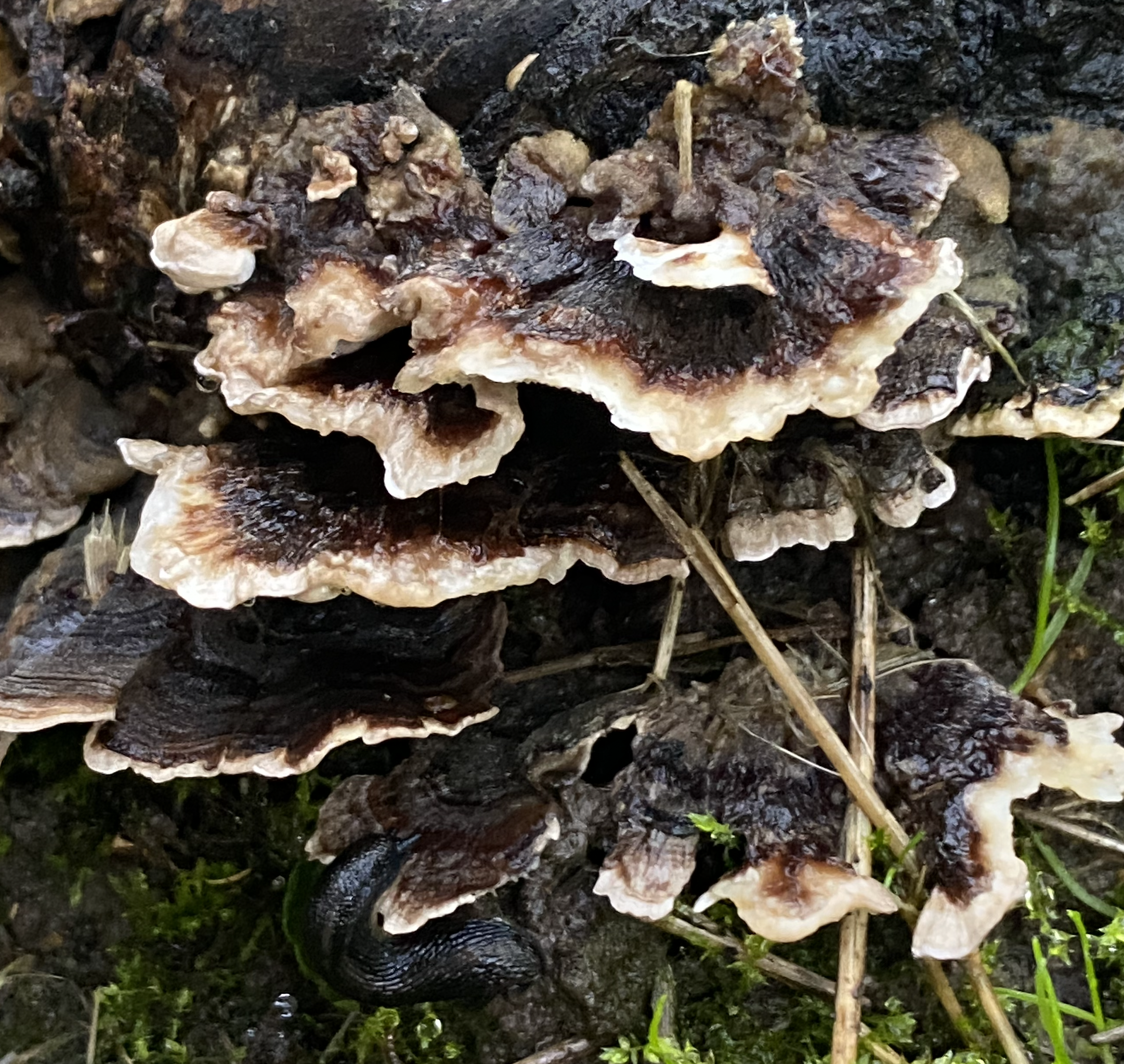 This type of fungi is a polypore or bracket fungi and is commonly known as turkeytail, and is one of the most common fungi, you can find. It grows on the sides of old trees or rotting logs. It grows with stripey layers in different colours.
This type of fungi is a polypore or bracket fungi and is commonly known as turkeytail, and is one of the most common fungi, you can find. It grows on the sides of old trees or rotting logs. It grows with stripey layers in different colours.
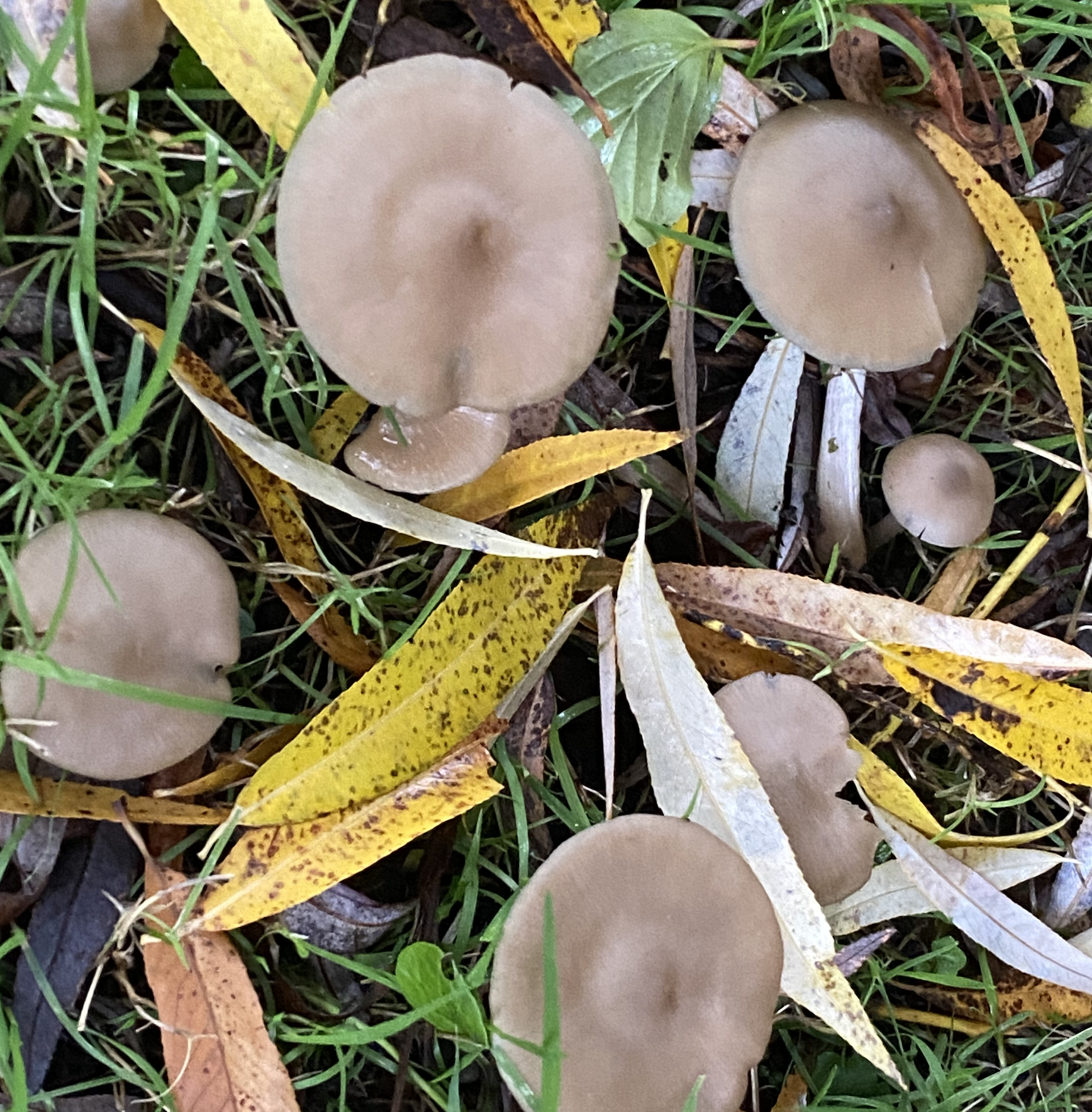 These fungi are Entoloma or more commonly pinkgill. However there are around 2000 types of Entoloma fungi and can be hard to tell them apart. These were found under the willow on the grass at the front of church. Whilst we do not know the exact species, it is possibly Entoloma sinuatum, which has been shown to form an association with willow trees. But in order to properly identify it we would need to use a microscope to examine the spores.
These fungi are Entoloma or more commonly pinkgill. However there are around 2000 types of Entoloma fungi and can be hard to tell them apart. These were found under the willow on the grass at the front of church. Whilst we do not know the exact species, it is possibly Entoloma sinuatum, which has been shown to form an association with willow trees. But in order to properly identify it we would need to use a microscope to examine the spores.
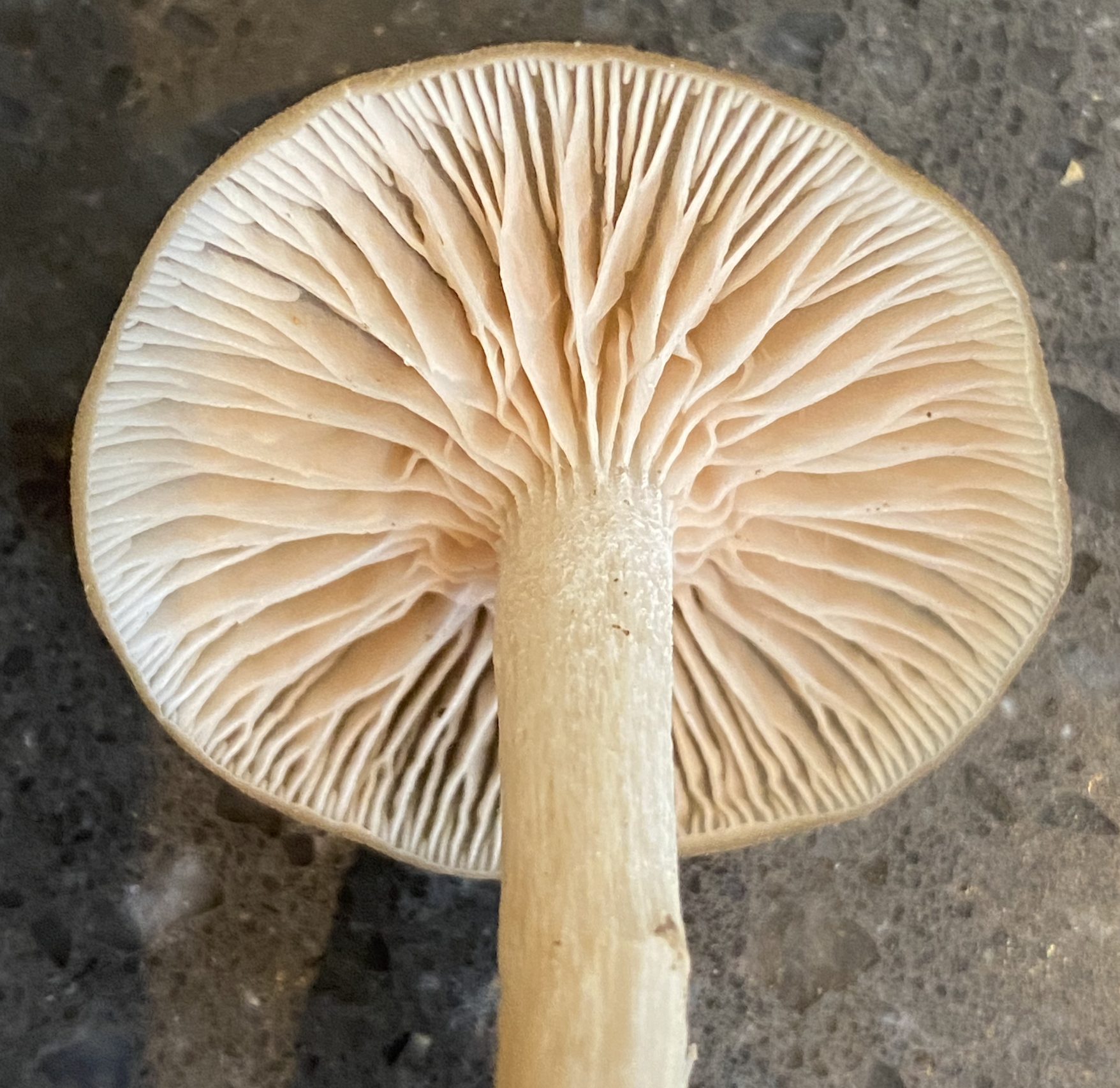 If we turn the fungi over, we can see the structure. This type of fungi has gills, which are a pinky colour (and will darken as the fungi ages).
If we turn the fungi over, we can see the structure. This type of fungi has gills, which are a pinky colour (and will darken as the fungi ages).